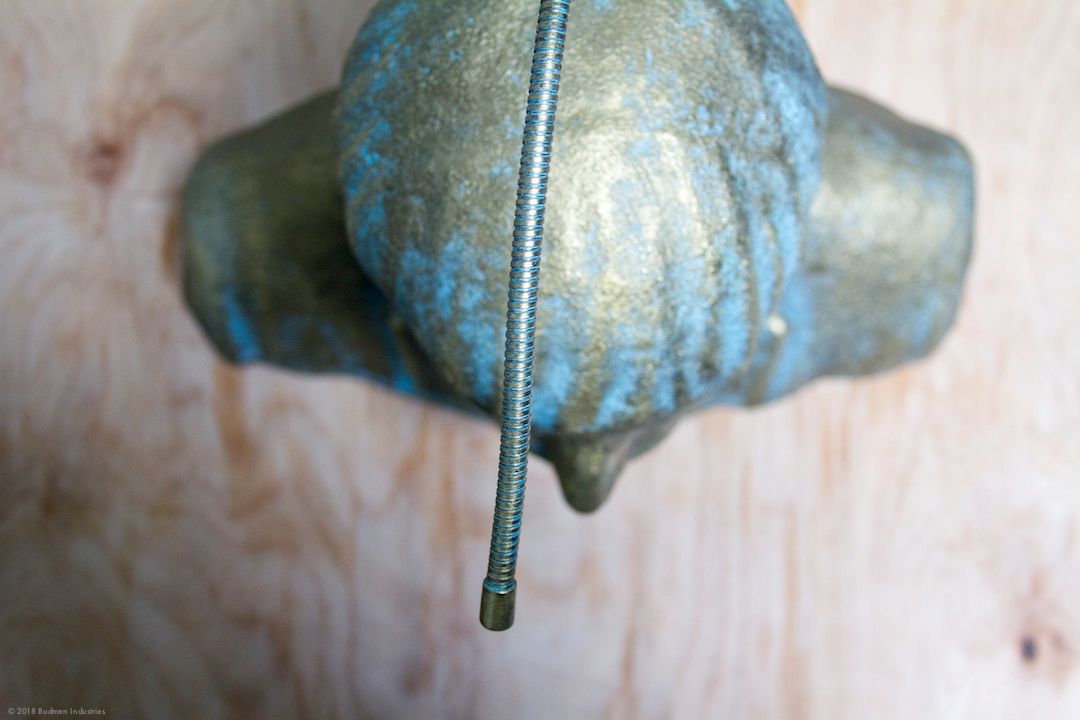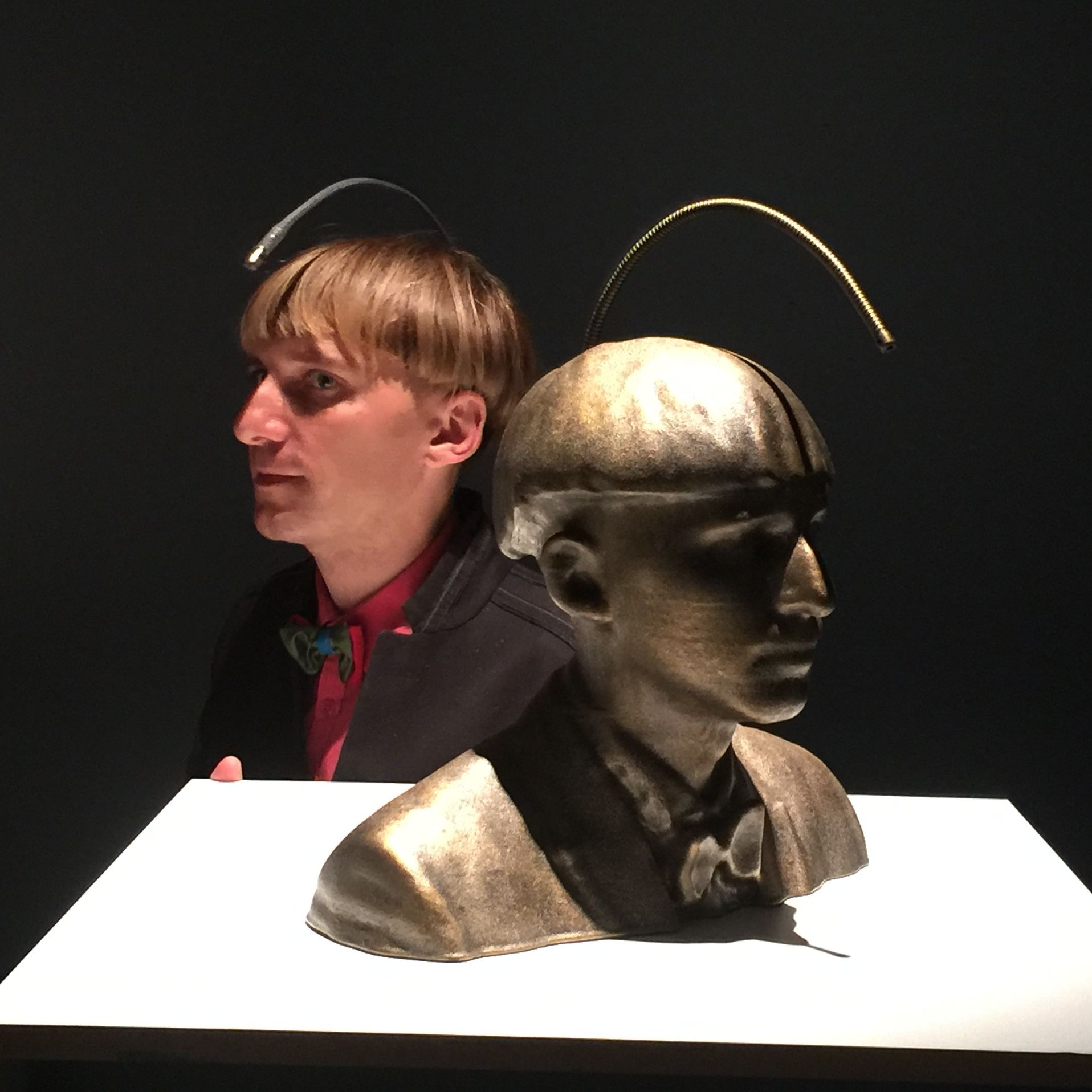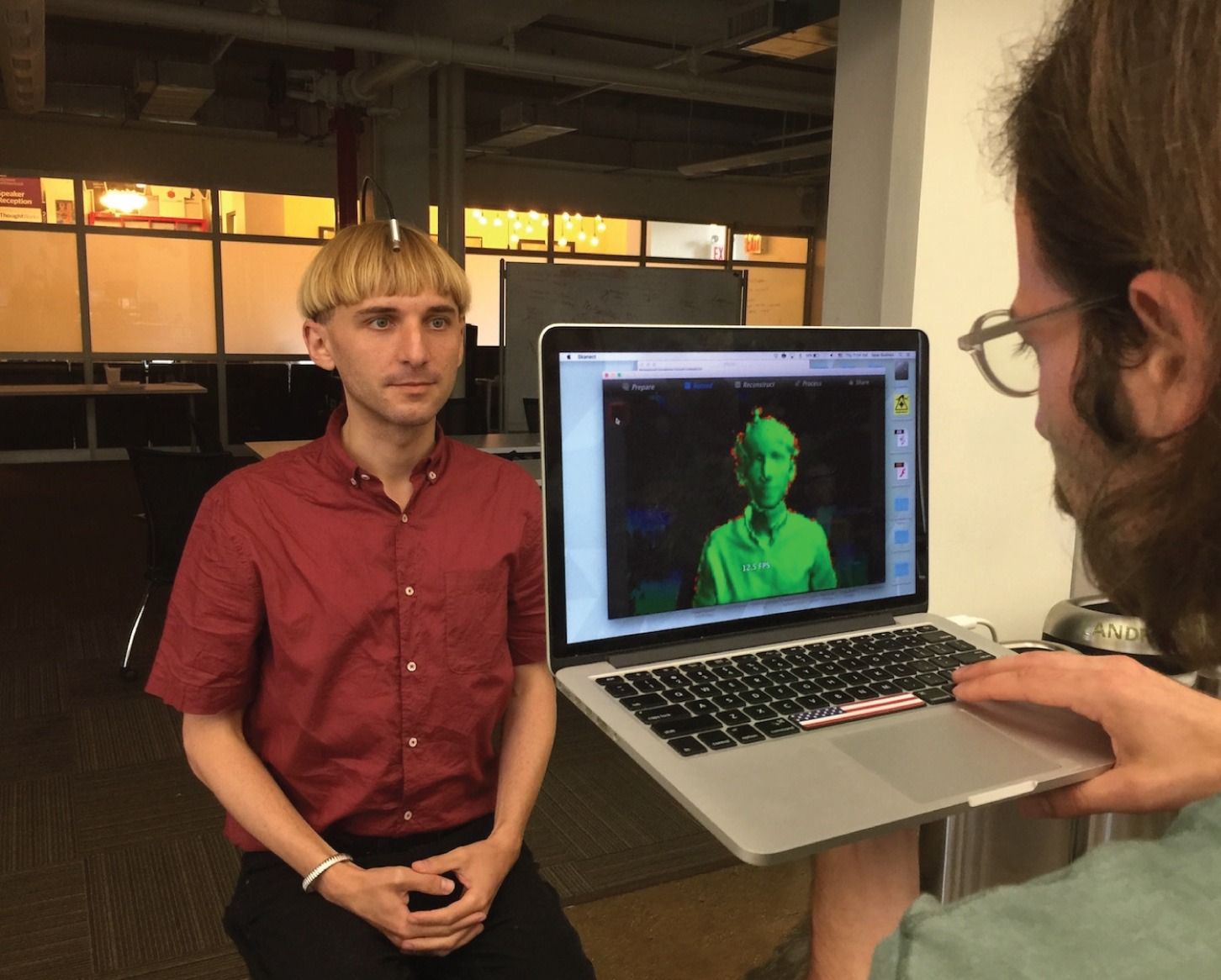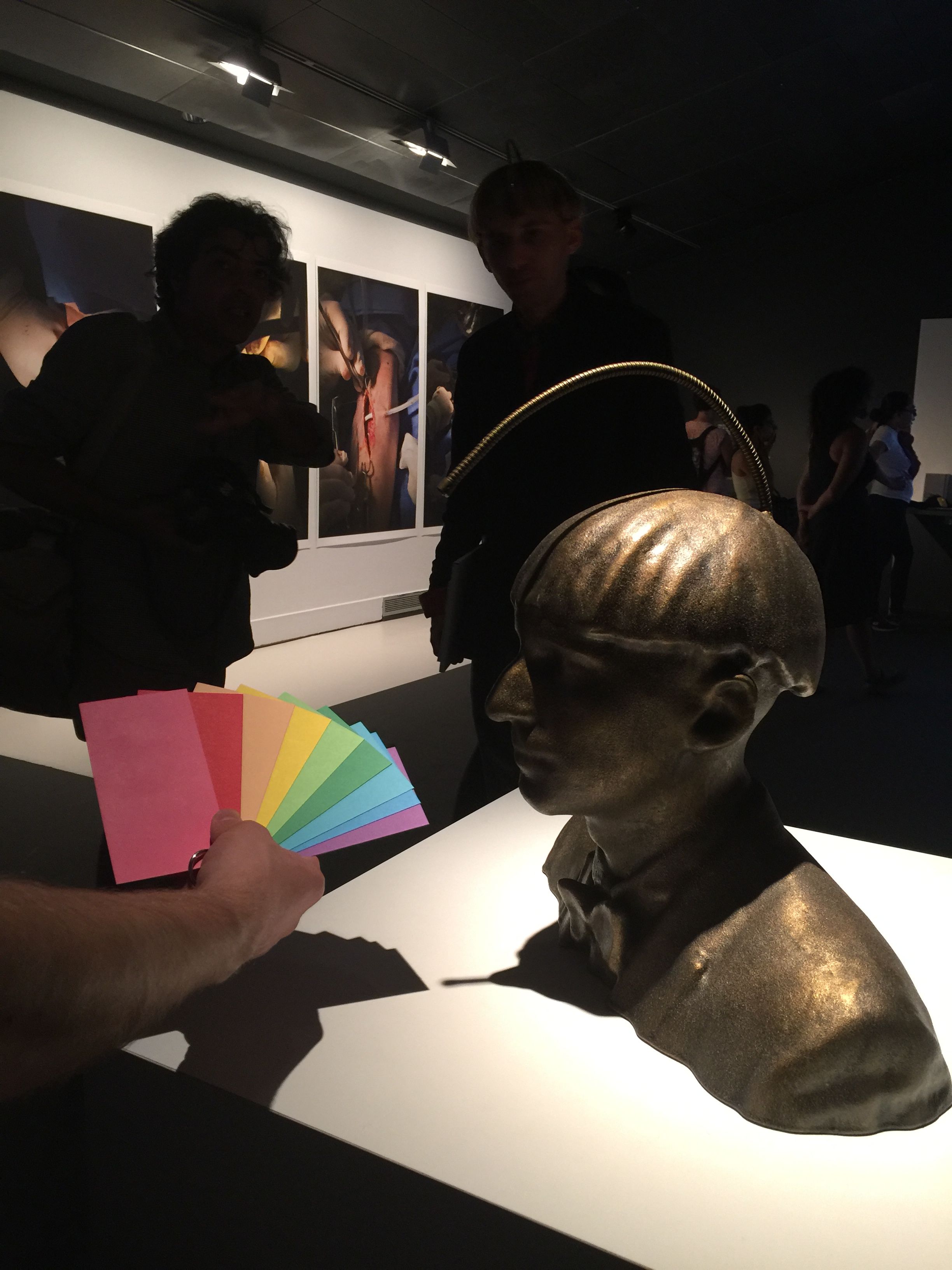Neil Harbisson hears color. We collaborated to create a sculpture that lets him share his extraordinary sensory world.
Neil Harbisson hears color. We collaborated to create a sculpture that lets him share his extraordinary sensory world.
Neil Harbisson was born without the ability to see color. His eyes didn't develop the cones and rods necessary to perceive color—he saw only in black, white, and shades of gray. Very similar to Dorothy's experience before she visits Oz.
Neil was always curious about what it was like to sense color.
In his mid-20s, he met a group of researchers in England who were developing a technology that could take light (which is a wavelength) and convert it to sound (which is also a wavelength).
They developed something called the sonochromatic scale, which converts light to sound—or color to sound.

Touch a color 🎵

People ask Neil all the time: 'What is it like to listen to color?' How do you answer that? How can you share a sensory experience that most people will never have?
Together, we came up with the idea of creating a 1:1 life-size sculpture of Neil containing the same cybernetic components that he had surgically implanted.
A sculpture that could hear color.
A sculpture that visitors could interact with—pointing colors at its antenna and hearing what Neil hears.
It would be a bridge between Neil's sensory world and everyone else's.


The tool we were using to capture him was visible to him in a way it wasn't to us.

Point cloud data: thousands of points in 3D space capturing Neil's form
We sent the 3D model to our printer and printed the sculpture in sections.
Then came the careful work of installing the electronics—the antenna, the sensors, the audio system that would convert color to sound exactly the way Neil's implant does.
Finally, we painted the sculpture with a bronze finish.
This wasn't just aesthetic—we wanted to reference the bronze sculptures of changemakers throughout history. Leaders, artists, activists immortalized in bronze.
Neil Harbisson, the world's first government-recognized cyborg, now joins that lineage.

Unlike traditional bronze sculptures of historical figures, these invite participation. They don't ask you to observe from a distance. They ask you to engage, to experience, to understand.

| Title | Neil Harbisson Cyborg Sculpture |
|---|---|
| Subtitle | Interactive Synesthetic Experience |
| Year | 2016 |
| Collaboration | Neil Harbisson, Isaac Budmen, Stephanie Budmen |
| Category | Interactive Sculpture, Assistive Technology Art |
| Technology | 3D scanning (infrared), large-scale 3D printing, custom electronics |
| Finish | Bronze coating (referencing historical monuments) |
| Scale | 1:1 life-size with functional antenna |
| Functionality | Interactive color-to-sound conversion via sonochromatic scale |
| Sonochromatic Range | Visible light spectrum (380-780 nm) + infrared/ultraviolet |
| Locations | Barcelona, Dublin, Singapore, Germany, Smithsonian Institution (Washington DC) |
| Impact | Thousands of visitors have experienced synesthetic color-hearing |
| Philosophy | Experience teaches better than explanation |
Now that we've shared one enhanced sense, what other extraordinary human experiences can we make accessible?